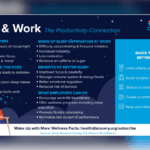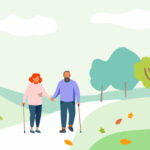The recent coronavirus pandemic has led to the latest fashion trend – face masks (whether we like it or not)! It seems that masks are being sold everywhere! We see them at grocery and retail stores, restaurants and hair salons, in ornate patterns, bright colors and branded with company logos. Ever see the ones that look like a bearded mouth/chin? How about a panda mouth? Going out is like playing a game of Guess Who!
My colleague Heather Gartside recalls, “In a mall near me, a security guard was handing out free disposable masks to those walking in the building without one. Now, before you leave your home, you need to make sure you have your phone, wallet, keys… and a mask! But what is the best face mask?”
Let’s start with elimination. Some say the least effective facial coverings are the gaiters or neck fleeces – lightweight fabric mostly worn by athletes, likely due to the fabric used and the fit around the nose/mouth. The CDC cautions against their use, as “effectiveness is unknown at this time.”1 A study by Duke University concluded that polyester/spandex-blended gaiters are not effective at blocking coronavirus droplets.2
Harvard Medical School explains that “medical grade N95 masks perform best” in their protection against droplets from coughing, sneezing, talking or breathing,3 however these should be saved for medical professionals’ use. The CDC recommends masks for the general public that…4
- Have 2 or more layers of washable, breathable fabric (not vinyl!)
- Completely cover your nose and mouth without an exhalation valve.
- Fit snugly against the sides of your face and don’t have gaps, but are not medical-grade, like N95 respirators or surgical masks.
Below are my observations to help you choose your best go-to mask. Because N95 masks are in high demand by healthcare professionals and first responders, they are not included in my evaluation.5
The Armor
The fabric you use must be breathable (obviously)! However, if it’s too loose of a weave, droplets can pass through, so you want the tightest weave that you can breathe through. Tightly woven 100% cotton was found to outperform most synthetics in a filtering experiment by the American Chemical Society.5 They found another effective composition was one layer of cotton paired with a different material like silk, chiffon or flannel.
PRO TIP: If you can see through the mask when held up to a light, it’s not fully protecting you.7
Washable vs. Disposable
At the beginning of the pandemic when masks were harder to find, I used contoured disposable dust masks that I happened to have in my utility closet already. I liked the shape, and felt that using a fresh one each time I went out was more sterile than the washable masks I now use. Even when washed I try my best to keep the inside of the clean masks protected from any pollutants in the air, like dust, fuzz from other clothes, hair, etc. Since the mask will be worn right up against our airways, this is ever-important. A quick case-in-point…. I went rafting with the family last month and we were required to wear our masks on the bus to and from the launch site. As expected, my mask got wet from rafting which I then had to wear on the 20-minute bus ride back to the parking lot. Needless to say I got sick, just a cold, from breathing in all that river water. Kind of gross when I think about it now, but you see my point…keep the inside of that mask as sterile as possible to decrease your chances of catching any kind of bug.
Filter Pockets
One style I have is constructed with a moisture-wicking, decorative outer layer, a soft inner layer, and a pocket for disposable filters. To date, I have found filters aplenty and in a variety of sizes and wear duration, and some filters even contain their own carbon layer within.
Carbon filters, as seen in air purifiers, trap particles like dust, smoke, mold and chemicals. It is thought they help remove bacteria from the air and absorb any particles that may have gotten through the first layer of the mask. Dr. Josh Davidson, an allergy and immunology specialist, was quoted in an NBC News report8 that “While [carbon filters] may help purify the air around you, they likely won’t increase the efficiency of filtering out viruses.” He goes on to say, “a piece of high-thread count fabric may work just as well.” The article goes on to recommend masks with both carbon and HEPA filters, reminding the audience that no mask will protect you 100%.
I do prefer the masks with filter pockets. My feeling is, if nothing else, it’s an additional third layer for droplets to penetrate before making a home in my airways.
The Nose Pinch
Wearing glasses 16 hours a day, I prefer masks with an adjustable nose wire. They conform better to the nose bridge so my glasses don’t fog as I breathe. Plus they are adjustable so you can loosen the “grip” the longer you wear (and get frustrated with) your mask. Experts recommend that face masks be worn tightly against the skin to decrease chances of any virus-carrying droplets from squeezing around the perimeter.
Chin-Embracing, Nose-Hugging Contour
My favorite mask is a soft, durable fabric specially stitched to contour the face. There is extra room sewn in to embrace your chin and a triangular shape to hug the bridge of your nose. Further, I find the flat or pleated masks inhibit my nasal passages, perhaps from the, unseemly, weight of the facial covering.
Loops or Ties?
I was that kid whose shoes were always untied, so I’m definitely choosing ear loops over ties. Some are a single piece of fabric and some are elastic loops sewn into the mask. My go-to mask has stretchy latex-free ear loops with adjustable clips to make for a tighter or looser fit.
Author’s Pick: Just about every one of my positive remarks made in the categories above point to the same, favorite mask of mine. No, I do not own stock in this merchant, but I find the masks from VistaPrint to be the most comfortable, tightly woven and economically reusable, with multiple layers of protection. Plus, they’re super cute!
So, Heather, to answer your question about which mask is best… It really depends on your preference in the areas above. Essentially, two or more tightly woven layers and a snug fit provide the best protection against COVID-19. However, the real takeaway here is simply wear whichever mask you choose, properly and consistently. While researchers debate which materials and constructions provide the most effective protection, experts agree that properly worn masks are a crucial tool to reduce the spread of COVID-19.
Now, I really should run and call my stockbroker….
MAKE YOUR OWN FACE MASK
The CDC offers DIY instructions on both sewn masks and non-sewn masks, which comes in handy when you’ve run out of clean masks. Crafty? The John Hopkins Medicine provides detailed instructions on the materials and steps to sew your own face mask.9
2Healthline, “Neck Gaiters are Stylish, but How Effective are They in Stopping COVID-19 Spread?”
3Harvard Medical School, “Coronavirus Resource Center”
4Centers for Disease Control, “How to Select, Wear and Clean Your Mask”
5U.S. Food & Drug Administration, “N95 Respirators, Surgical Masks, and Face Masks”
6MIT Medical, “How do I Choose a Cloth Face Mask?”
7Harvard Medical School, “Coronavirus Resource Center”
8NBC News, “How to Buy Face Masks with Filters, According to Medical Experts”
9John Hopkins Medicine, “Instructions on How to Make a Mask”
MORE RESOURCES:
HealthDiscovery.org, “COVID-19 Question: Why is a Face Mask Controversial?”
NPR, “A User’s Guide To Masks: What’s Best At Protecting Others (And Yourself)”
Science Alert, “The Best And Worst Face Masks For COVID-19, Ranked by Their Level of Protection”
World Health Organization, “How to Wear a Non-Medical Fabric Mask Safely”












